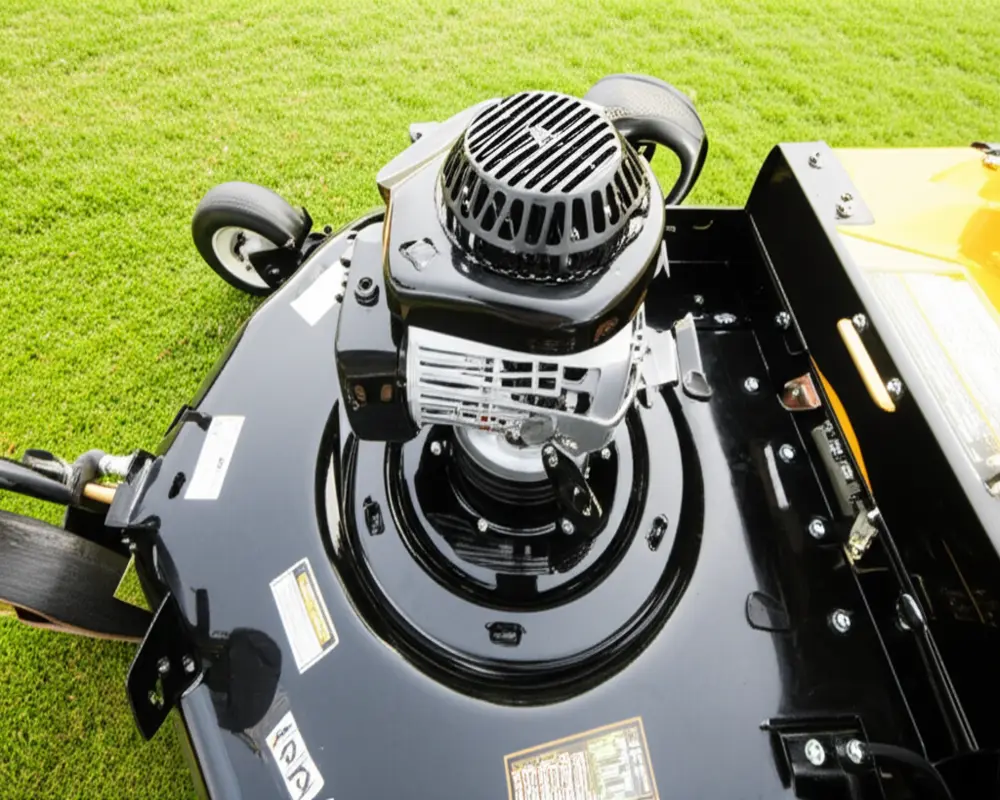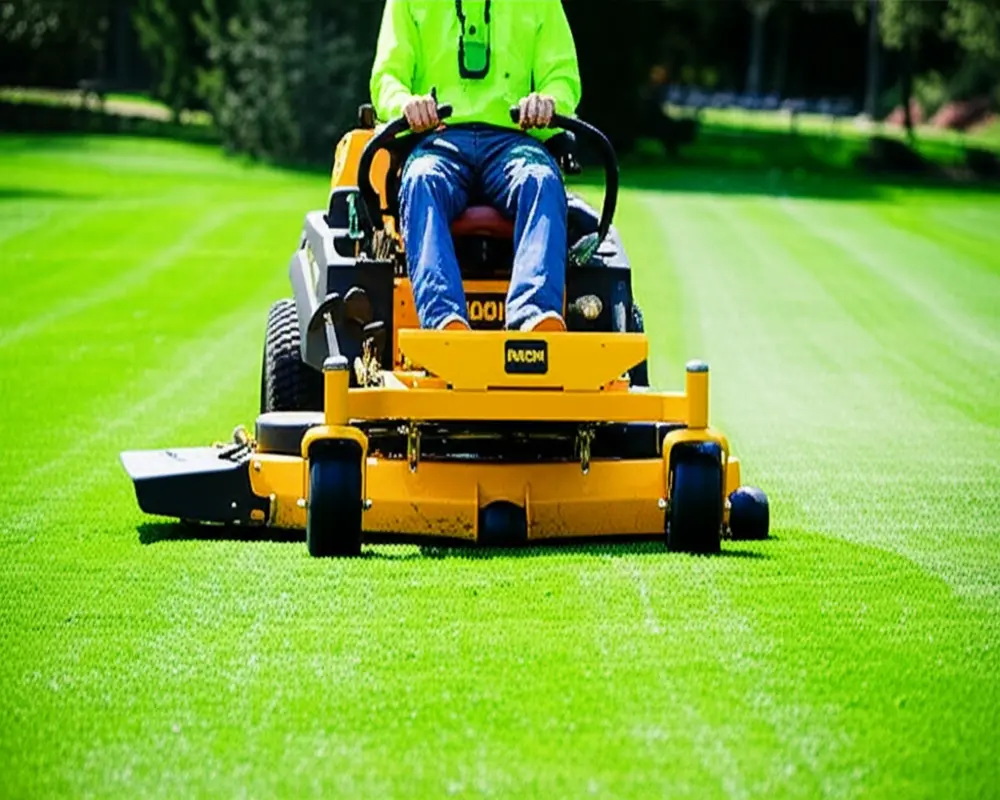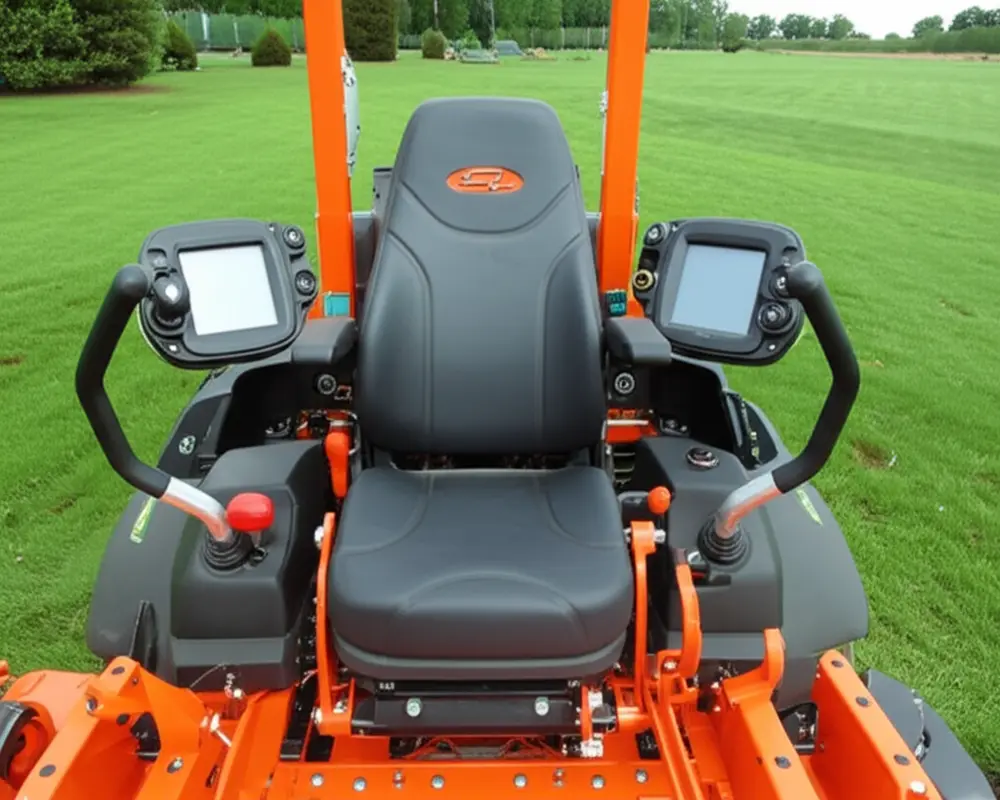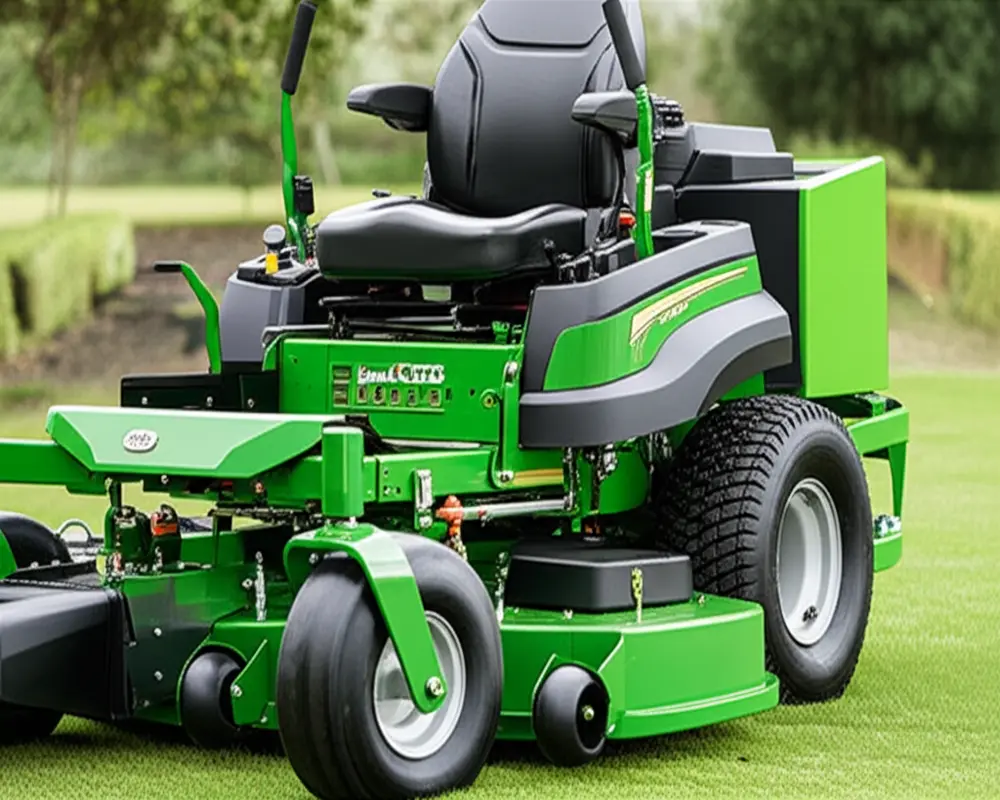The Definitive Guide to Commercial Lawn Mower Features: What Pros Need to Know for Peak Performance & ROI
For professionals in landscaping, grounds management, and municipal services, selecting the right commercial lawn mower is a strategic investment. The commercial lawn mower features you choose define not only the machine’s daily performance but also the long-term return on investment (ROI). Understanding these features helps maximize productivity, reduce downtime, and ensure durability on diverse terrains and demanding jobs. This guide is tailored for professional landscapers, grounds crews, and municipal users aiming to make informed decisions that enhance operational efficiency and equipment lifespan.
Thank you for reading this post, don't forget to subscribe!I. Introduction: Investing Smart – Why Features Define Your Commercial Mower’s Success
A commercial lawn mower is more than just a tool—it is a foundational asset in landscaping and property maintenance operations. Unlike residential mowers, commercial models are engineered for continuous, heavy-duty use. This difference means that the features built into these machines critically impact productivity, profitability, and longevity.
Professionals must look beyond brand names and consider specific features that improve cutting performance, operator comfort, maneuverability, and ease of maintenance. A mower equipped with the right attributes can drastically reduce labor time and maintenance costs, leading to higher uptime and better ROI.
By the end of this guide, you will have a comprehensive understanding of what to prioritize when selecting a commercial mower, ensuring your purchase is a wise, strategic investment.
II. Setting the Standard: What Makes a Mower “Commercial-Grade”?
Commercial mowers stand apart from residential models primarily due to their design focus on durability and extended duty cycles. Where residential mowers might be used a few hours weekly, commercial units are expected to operate multiple hours daily under varying conditions.
Key distinctions include:
- Duty Cycle: Commercial mowers are built to endure longer, continuous use without overheating or breakdowns.
- Materials: Heavier gauge steel frames and decks provide robustness.
- Engine Strength: Commercial engines typically offer higher horsepower and torque for tackling thick grass and uneven terrain.
- Design: Emphasis on serviceability, operator comfort, and safety features.
For commercial operators, priorities align around reliability, efficiency, durability, comfort to reduce fatigue, and maintenance ease to minimize downtime.
III. Powering Productivity: Engine & Fuel System Features
The engine is the heart of any commercial lawn mower, and selecting the appropriate type and fuel system is essential for peak performance. Commercial mowers feature various engine options:
Gasoline Engines: The most common, with choices between Electronic Fuel Injection (EFI) and carbureted systems. EFI offers better fuel efficiency and consistent performance under load, while carbureted engines may be easier to service in some cases.
Diesel Engines: Preferred for heavy-duty applications due to superior torque and fuel economy, especially in larger mowers.
Propane Engines: An environmentally friendly alternative, reducing emissions and operating costs.
Electric/Battery-Powered Engines: Emerging technology ideal for noise-sensitive or environmentally regulated areas; however, battery life and power output remain considerations.
When assessing power, it’s crucial to understand the roles of torque versus horsepower. Torque drives the mower’s ability to cut through dense, tall grass and maintain speed under load, while horsepower influences overall speed and efficiency.
Leading commercial engine brands such as Kawasaki, Kohler, Briggs & Stratton, Kubota, and Yanmar offer engines known for durability, advanced cooling systems, and protective features like oil pressure sensors and thermal overload protection, which extend engine life and reduce unexpected breakdowns.
IV. The Cut Quality Master: Deck Design & Cutting System Features
The cutting deck is the centerpiece of a commercial mower’s performance. Deck design influences cut quality, durability, and maintenance requirements.
Commercial decks typically come in two types:
- Fabricated Welded Steel Decks: Constructed from heavy-duty steel plates welded together, offering superior strength, resistance to warping, and extended lifespan under rough conditions.
- Stamped Steel Decks: Pressed from a single sheet of steel, these decks are lighter and often found in residential mowers but less durable for commercial use.
Deck reinforcements and gussets enhance strength, particularly around spindle mounts and high-stress areas, preventing deformation over time.
Cutting width options vary, balancing coverage with maneuverability. Wider decks cover more ground faster but may be less agile on tight spaces. Adjustable cutting height mechanisms enable customization according to grass type and condition, ranging typically from 1.5 to 5 inches (approximately 4 to 12.7 cm).
Discharge options include side discharge for quick clippings dispersal, mulching to finely chop grass for natural fertilization, and bagging systems for clean collection.
Premium spindles with sealed bearings ensure smooth blade rotation and reduced maintenance, while deck lift systems facilitate easy height adjustments and transport.

V. Maneuverability & Traction: Drive System Features
Efficient maneuverability is vital for professional landscapers working in varied environments. Commercial mowers offer several drive system options:
Transmission Types: Hydrostatic transmissions are favored for their smooth, variable speed control and ease of use, enabling operators to adapt cutting speed seamlessly.
Zero-Turn Technology: Zero-turn mowers provide exceptional agility with a turning radius close to zero, greatly increasing productivity in complex landscapes and tight spaces.
Optimal ground speed settings balance cutting efficiency with safety and operator control. Transport speeds vary but often reach up to 10 mph (16 km/h) to facilitate quick movement between job sites.
Tire selection and suspension systems are tailored to terrain adaptability. Turf-friendly tires minimize damage to grass while providing traction, and suspension systems absorb shocks, improving operator comfort and traction on uneven surfaces.

VI. Built to Endure: Frame & Chassis Durability Features
The frame and chassis form the mower’s structural backbone. Commercial mowers utilize heavy-gauge steel frames welded with precision for maximum strength and impact resistance.
Heavy-duty front forks and caster wheels support deck stability and smooth turning, critical when navigating obstacles. Protective bumpers and guards shield vital components from debris and accidental impacts.
Corrosion resistance through powder coating or other finishes prolongs frame life, especially in humid or wet climates, preventing rust and structural degradation.
VII. Operator Comfort & Ergonomics: Boosting Productivity, Reducing Fatigue
Operator comfort features are not mere luxuries but essential elements that boost productivity and reduce fatigue during long hours of operation.
Advanced seating systems incorporate suspension, adjustable positioning, and ergonomic design to support posture and minimize vibration exposure. Intuitive control layouts reduce learning curves and enhance safety.
Vibration isolation mechanisms and noise reduction features contribute to a less tiring work environment. Additional amenities such as cup holders, armrests, and storage compartments add practical convenience.
Integrated lighting extends working hours into early mornings or late evenings, enhancing job site flexibility.

VIII. Streamlining Operations: Maintenance, Serviceability & Uptime
Minimizing downtime is critical in commercial operations. Mowers designed with maintenance in mind ensure quick, tool-free access to key components such as air filters, belts, and blades.
Onboard diagnostics and monitoring systems alert operators to maintenance needs before breakdowns occur, improving uptime. Thoughtful fuel tank design enhances safety and machine balance, reducing operator strain.
Spindle and belt systems engineered for easy replacement and adjustment further streamline upkeep. Partnering with manufacturers and dealers with strong support networks ensures access to parts and service expertise.
IX. Safety First: Essential Protective Features for Commercial Use
Safety remains paramount with commercial mowers. Roll-over protective structures (ROPS) protect operators during tip-overs. Operator presence systems disable blades if the operator leaves the seat.
Blade safety guards prevent debris ejection, while emergency stop mechanisms allow rapid shutdown in hazardous situations. Secure parking brakes prevent accidental movement during stoppages.
X. Enhancing Versatility: Attachments & Accessories
Versatility extends a mower’s utility beyond grass cutting. Attachments such as striping kits deliver professional finishing touches, while mulching and bagging system enhancements improve turf health and clean-up efficiency.
Optional light kits increase visibility, and weight kits enhance traction on slopes. Specialized attachments like snow blades enable year-round use in diverse climates.
XI. Protecting Your Investment: Warranty & Resale Value Considerations
Commercial warranties vary from basic coverage to comprehensive packages covering major components and labor. Understanding warranty terms and dealer network reach is crucial for long-term support.
Resale value depends on brand reputation, machine condition, and feature set. Investing in durable, well-supported models preserves value and eases fleet upgrades.
XII. Making the Smart Commercial Choice: A Feature-Driven Buying Guide
When choosing a commercial mower, begin by assessing your business’s property size, crew size, and terrain challenges. Total cost of ownership, including maintenance and fuel costs, should inform selection.
Operator comfort is a productivity multiplier, reducing fatigue-related errors and downtime. Ensure scalability for future crew expansion and consult dealers for tailored recommendations. Ask critical questions about feature benefits, maintenance ease, and support availability before purchase.
XIII. Conclusion: Your Mower – A Strategic Asset for Professional Growth
Your commercial lawn mower is more than equipment; it’s a strategic asset that influences your operational success. By prioritizing essential commercial lawn mower features such as engine power, deck design, maneuverability, durability, comfort, and maintenance ease, you secure a tool that maximizes productivity and ROI.
Make your investment count by selecting a mower tailored to your professional needs, backed by reliable support, and designed for peak performance in demanding environments.
For additional insights on maintaining your landscaping tools and equipment, visit our detailed guides on commercial mower maintenance and hand cultivator expert tips.
FAQs About Commercial Lawn Mower Features
- What is the advantage of a zero-turn mower for commercial use?
- Zero-turn mowers offer exceptional maneuverability with a turning radius near zero, allowing operators to navigate tight spaces efficiently, reducing mowing time and enhancing productivity.
- How important is operator comfort in commercial mowers?
- Operator comfort directly affects productivity and fatigue levels. Features like suspension seats, vibration dampening, and intuitive controls enable longer, safer work sessions with less strain.
- Which engine type is best for heavy-duty commercial mowing?
- Diesel engines generally provide superior torque and fuel efficiency for heavy-duty applications, but modern gasoline EFI engines also deliver excellent performance with easier maintenance.
- How does deck design impact cutting quality?
- The deck’s construction material, reinforcement, cutting width, and height adjustment mechanisms all influence the quality of cut, durability, and adaptability to different grass conditions.
- What maintenance features improve mower uptime?
- Tool-free access to components, onboard diagnostics, and modular spindle and belt designs simplify upkeep, reducing downtime and ensuring the mower stays operational longer.

